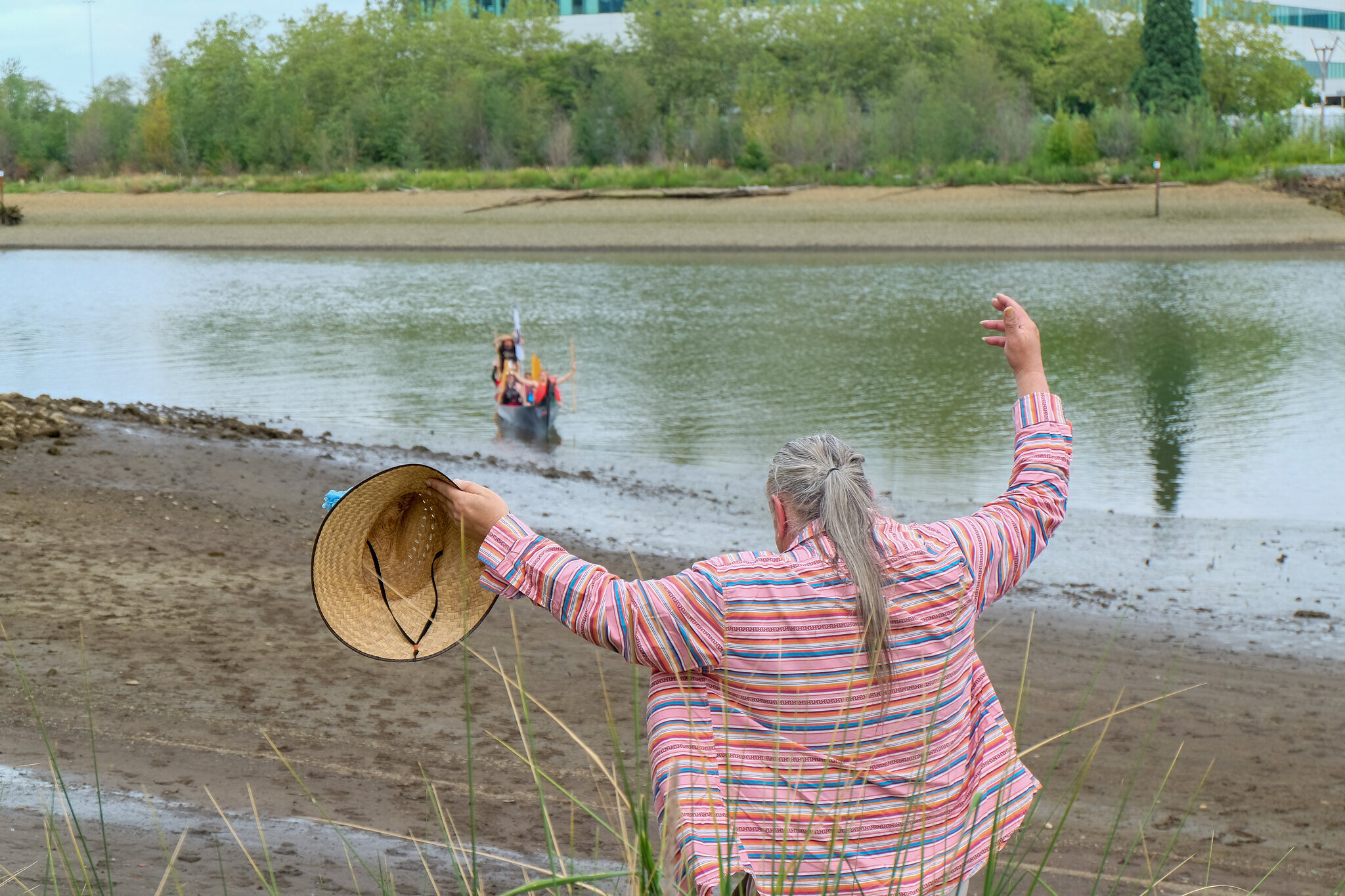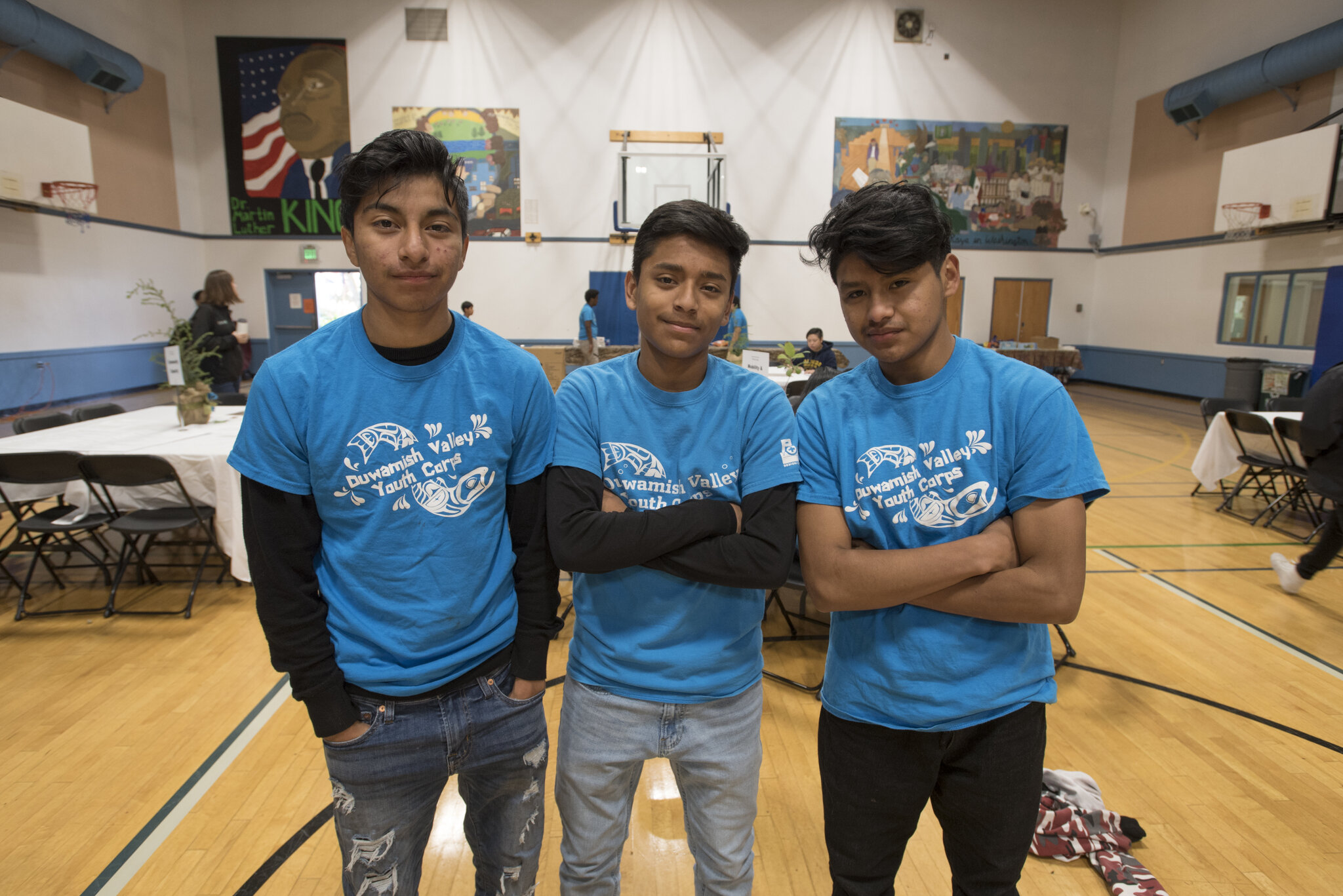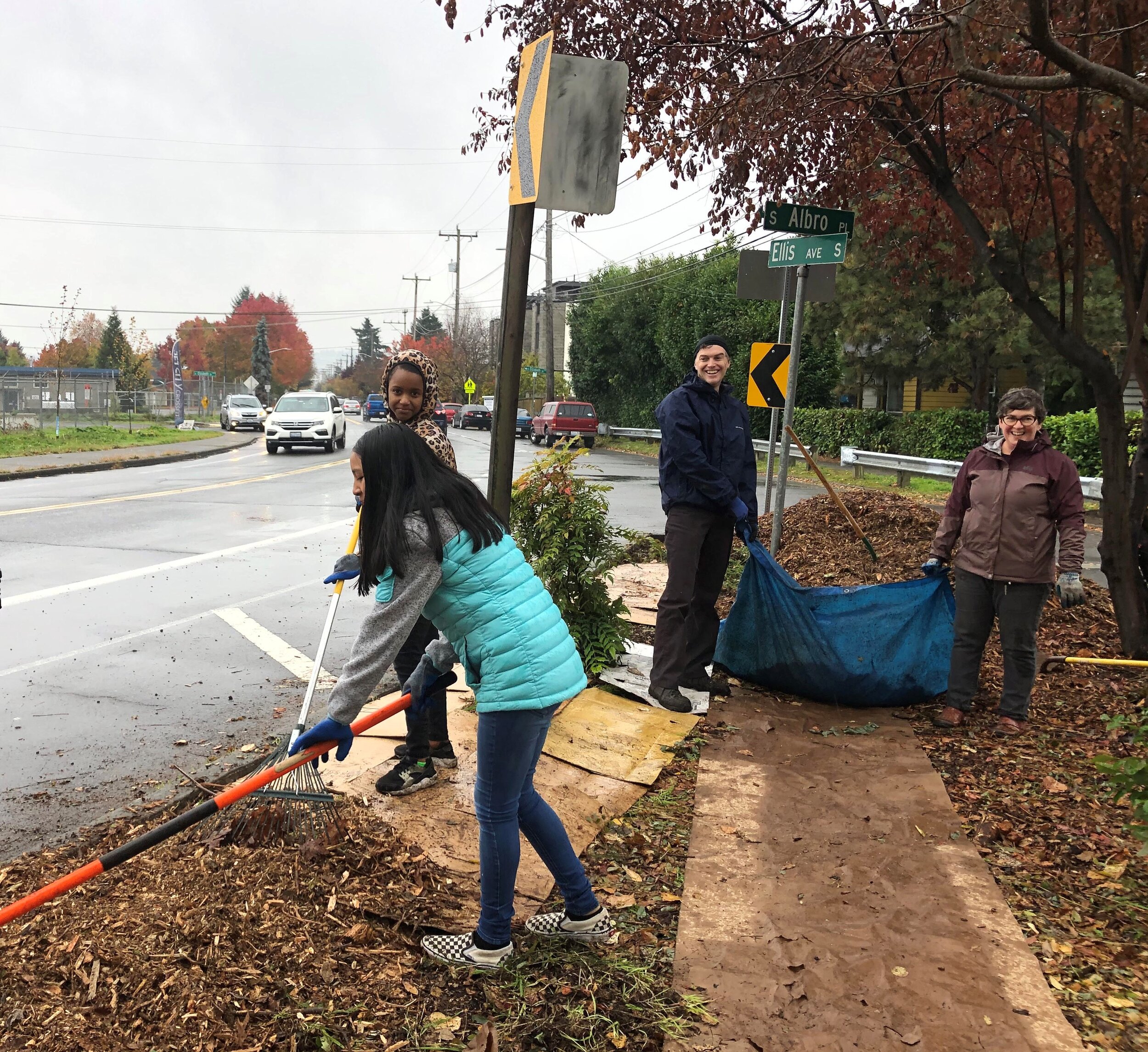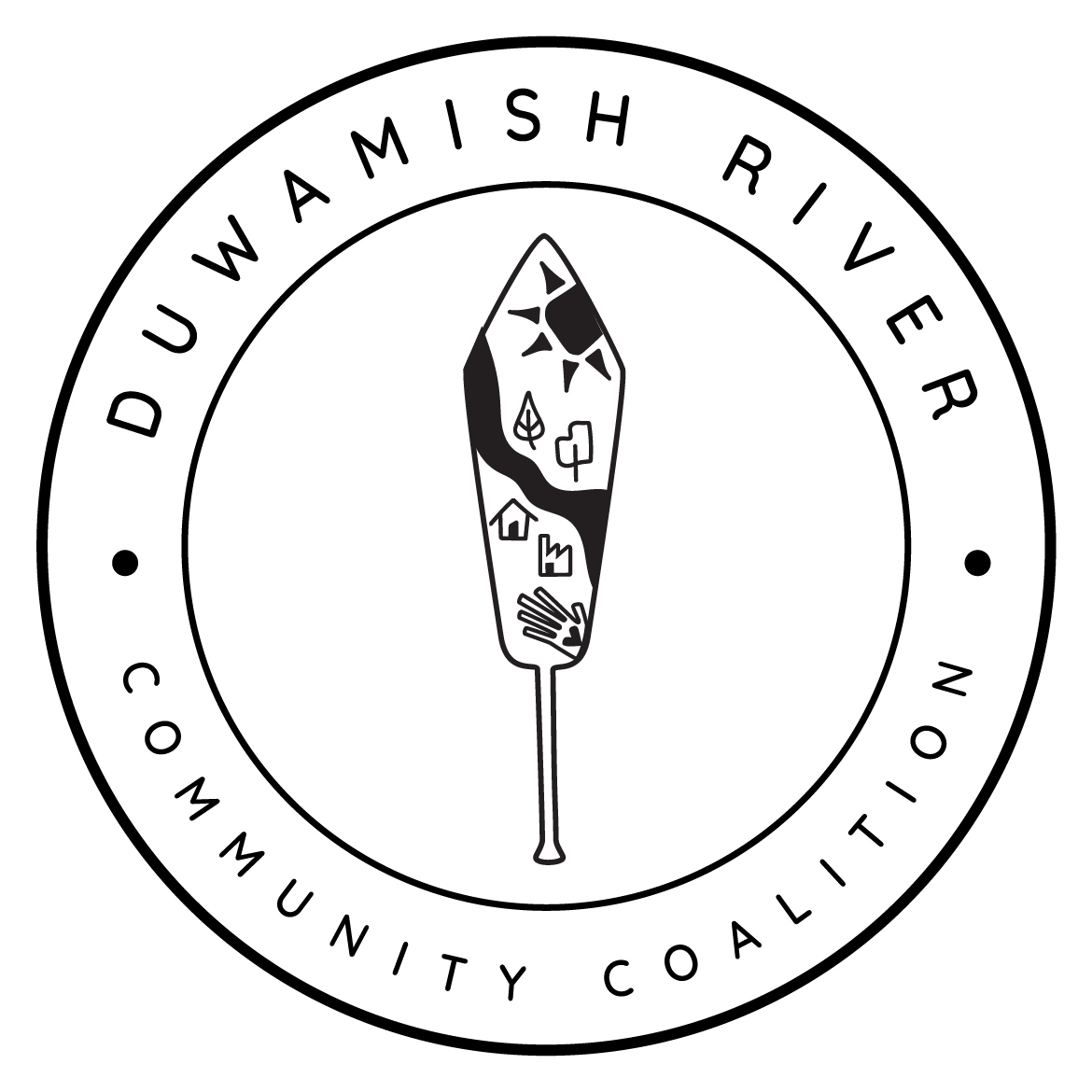









Key Findings
ZIP code 98108 has the highest cumulative impact score of all Seattle areas in the study.
The cumulative impact score is a combination of socioeconomic, environmental, and public health conditions ranging from 6–120, with higher scores indicating disproportionate impacts.
98108 received the highest score (106), while the lowest score (13) was for Magnolia (98199).
The 98108 ZIP code has the greatest number of contaminated waste sites and the poorest built environment characteristics of all areas studied, and ties with Eastlake (98102) for the most severe air pollution.
Duwamish Valley Youth Corps
The Duwamish Valley CHIA examined environmental and socioeconomic data for 10 ZIP codes citywide, including 98108, which encompasses South Park, Georgetown and Beacon Hill. Examples of indicators used include poverty; the number and severity of contaminated waste sites; percent tree canopy; and frequency of asthma hospitalization. Using an established cumulative impacts ranking methodology and calculation, 98018 was compared to other areas of Seattle, as well as to Seattle and King County averages. Additional evidence at the larger Duwamish Valley level and smaller South Park and Georgetown census tract level was examined as well. The CHIA found that the Duwamish Valley has pronounced health inequities relative to other areas of Seattle, compromising their health and meriting attention from federal, state and local decision-makers. For more information about the Cumulative Health Impact Study
ZIP code 98108 ranks poorly for most environmental health factors.
Analysis by ZIP codes obscures even greater impacts in South Park & Georgetown. South Park and Georgetown residents, examined separately from the rest of 98108, have a life expectancy is 73.3 years, eight years shorter than the Seattle and King County average (81.5 years), and 13 years shorter than for residents of Laurelhurst, in the 98105 ZIP code (86.4 years).
How are addressing these challenges?
Everything I’ve been through with the program has helped me through life. I’m an okay presenter now, when I used to not be able to speak to a group of 5 people. I’ve been built well by all these kind, loving, and supporting people. If it was any other way, I feel like my life would be a total disaster and I’m grateful right now that it is not. Not to mention the Port of Seattle invited me back for an ambassador’s program for 10 weeks which is amazing because I love working there so much. I feel for everyone who needs a good program to help them get on their feet and keep them up and I can’t wait to see the program teach more youth about environmental justice and help them out of a hole if they are at risk youth like I was” Shelina Lal, 16 DVYC mentor. Read more here…
As a result of community prioritization and requests for support, in late 2016 the Community Stewards program was begun. This program depends heavily on the train-the-trainer model, in which DRCC/TAG employs two “Master Stewards” who work with 3-7 “community stewards” to plan stewardship events and stewardship presentations/lessons. The stewards maintain specific areas of the community (planted pots in the business district of South Park and traffic circles in Georgetown, for example) on a regular basis, for the environmental benefits and for the aesthetic results, badly needed in this post-industrial community. Read more here…
We recognize that affected community is well-equipped to address health and health-related issues. By promoting education DRCC supports community to find and advocate for solutions that suit them. We take are our role in making these lessons transparent and accessible very seriously and holistically. We work side by side with educators at our local school, Concord International Elementary, to provide curriculum for students, with program administrators at middle school and high school levels in the Duwamish Valley as well as further afield, and with adult programs offered at the Community Center, the Neighborhood Center, the Library, etc., all with the goal of ensuring community members understand the depth and scope of the Superfund cleanup and intersectional environmental justice issues in a culturally relevant way. Read more here…
La Voz de la Justicia is a Radio show DRCC host in partnership with Amigos de Seattle to continue to create new ways to bring information to community.
Learn from Past Initiatives
The Healthy River/Healthy Communities (HR/HC) project is aimed at implementing the recommendations from the Health Impact Assessment: Proposed Cleanup Plan for the Lower Duwamish Waterway Superfund Site as well as related community development priorities (like priorities identified in the community’s 2009 Duwamish Valley Vision Plan and Map, the 2013 Cumulative Health Impact Analysis community-based participatory research, surveys, and community prioritization workshops). The project will work with affected communities and federal, state, and local decision-makers to accomplish these goals.
To this end, the HR/HC project established a community-based “action team”/ “advisory group” and 10 project partners to prioritize, refine, and help implement recommendations. These recommendations range from creating open space and public access at riverfront cleanup areas to training and hiring local residents for cleanup jobs, increase tree canopy coverage in the valley, general neighborhood beautification, business vitality, economic development, and more. So far, we have leveraged this initial grant into over 1.1 million dollars invested in community priorities!
What is happening right now in the project?
Equity & Environment Initiative
DRCC/TAG was one of 16 organizations represented in the Community Partners Steering Committee (CPSC) for the Equity & Environment Initiative (EEI), a first-of-its-kind effort in the nation led by Seattle’s Office of Sustainability & Environment. Its aim is that everyone in Seattle benefits from the city’s environmental progress, especially those who live in communities that are most impacted by environmental issues.
As part of this effort, DRCC/TAG worked with Spanish-speaking, Vietnamese, and Somali community members to identify priorities in the South Park neighborhood. The Equity & Environment Agenda, the “cornerstone” of the Initiative, was released in April 2016 and includes recommendations specific to and applicable to the Duwamish Valley. We will continue to work with these communities in the coming months and years to take action on these priorities. We shared more about this work through the “Empowering Community Voices in the Environmental Movement” blog post.
Duwamish River Opportunity Fund
The City of Seattle allocated $250,000 for the Duwamish River Opportunity Fund (DROF) to implement recommendations identified in the original Health Impact Assessment (HIA) (published by the University of Washington’s School of Public Health, Just Health Action (JHA), and DRCC/TAG, 2014) and other community health priorities. DRCC/TAG worked since 2014 to identify priorities and develop project proposals.
2016’s Funding Cycle
In April and May 2016, DRCC/TAG once again worked with community members to develop proposals to address community priorities, including business vitality, air quality improvement, and expanding accessible green spaces.
We are also working to ensure that the voice of the Duwamish River’s subsistence fishers is taken into account in the development of “institutional controls” (efforts to minimize the potential for human exposure to contaminants). We will be partnering with Just Health Action and the Washington Department of Fish and Wildlife in organizing Vietnamese- and Spanish-speaking community members to encourage their active participation in this process.
We supported and collaborated with multiple project partners, including Just Health Action, Seattle Parks Foundation, South Park Retail Merchants Association, Hey Duwamish!, and others. Stay tuned for more updates in the coming months as funding decisions are made!
Our community action team identifying and prioritizing projects
Past DROF efforts
In 2014 and 2015, DRCC/TAG collaborated with the community to propose and implement many successful programs and projects. Here are some highlights!
Georgetown Urban Farm and Food Forest – You can check them out along Corson on the South Seattle College – Georgetown Campus. With raised beds and a greenhouse, the farm has been a success! Check out a work party and follow the progress on Facebook. The GUFF is continuing to work with the community and partners to ensure it is serving the needs and the priorities of Georgetown.
Hey Duwamish!, an interactive map of the South Seattle area monitoring environmental health issues. It continues to expand and incorporate more of the work happening on the Duwamish River.
8th Ave Trail Improvements – Check out the transformation of the Happy Trail! This was a partnership with the Seattle Parks Foundation – and the result of the hard work of community and the Duwamish Valley Youth Corps.
Traditional Native Food Program – See some of the events on the Duwamish Longhouse Facebook page!
Duwamish Tree Canopy Enhancement Project – In 2015, the effort planted over 200 trees in Georgetown and South Park, providing watering bags and more! The Duwamish Valley Youth Corps in partnership with Urban System Design’s Duwamish Valley Stewardship Program were part of those plantings, assisting neighbors in bringing the trees home and getting them in the ground!
DRCC/TAG and project partners continue to engage with the community and decision makers to address additional community priorities outside of the proposals submitted for DROF funding. Some of these priorities include:
COMMUNITY BASED PROJECTS:
Our Duwamish Valley Youth Corps program offers valuable and meaningful youth programming opportunities. Funding is secured through 2016 with generous support from the US Forest Service, The Russell Family Foundation, the City of Seattle (through SPARC), and other partners.
Our Duwamish Community Action for Clean Air project aims to involve the community in identifying and addressing air quality issues in the Duwamish Valley. As part of this exciting project, we have conducted 75 Home Environmental Assessments in partnership with the American Lung Association, installed indoor air filters, and, in partnership with Just Health Action, are working to install greenscreens to reduce air pollution. Expect to see at least one greenscreen installed in both Georgetown and South Park in 2016!
DRCC/TAG continues to collaborate with interested community members and the local business associations to ensure it has the capacity, tools and resources to be stewards of their own neighborhood – including planting and maintaining trees, removing graffiti, picking up litter, and additional restoration and beautification work throughout their neighborhoods.
SEEING COMMUNITY PRIORITIES IN ACTION:
As part of the Design Advisory Group, DRCC/TAG is ensuring the community’s voice is shaping the Georgetown Wet Weather Treatment Station, maximizing potential benefits of the project and minimizing any negative unintended effects. This treatment plant is aimed at reducing CSO overflows in the Duwamish River.
We’re supporting the expansion of open and green spaces in the Duwamish Valley neighborhoods through working with the Seattle Parks Foundation and South Park Green Spaces Steering Committee as they work to implement the South Park Green Space Vision Plan. We are excited to see the development of the Georgetown Green Spaces Vision Plan in 2016, spearheaded by members of the Georgetown Community Council.
Based on input from community members, we have been researching potential ways to address safety and crime concerns in South Park
We are also taking additional action for clean air by collaborating with Front and Centered. Our work involves advocating at the state level for laws and regulations that will benefit air quality in the Duwamish Valley and beyond!
And more!

